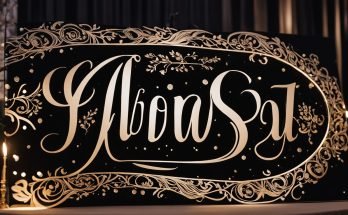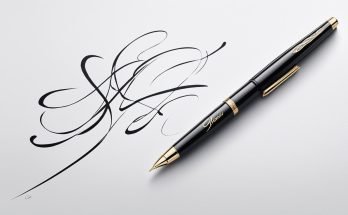Arabic Calligraphy Forms Unveiled: Discover the Intricate Beauty and Patterns!
Welcome to the captivating world of Arabic calligraphy forms! This ancient art form showcases a stunning array of rich patterns and harmonious lines that will leave you in awe. Arabic calligraphy is an intricate practice that has been perfected over centuries, and in this article, we will take you on a journey to explore its various forms, scripts, tools, and significance. Get ready to unravel the mystery and beauty behind each stroke and discover the artistry of Arabic calligraphy.
Key Takeaways:
- Arabic calligraphy forms display a wide range of rich patterns and harmonious lines.
- Arabic calligraphy plays a significant role in Islamic art, conveying the words of the Divine.
- There are different scripts in Arabic calligraphy, each with its own unique characteristics and historical context.
- To create stunning Arabic calligraphy, calligraphers use a variety of tools and materials.
- There are various resources available to learn Arabic calligraphy, including practice sheets, training courses, tutorials, and workshops.
The Importance of Arabic Calligraphy in Islamic Art
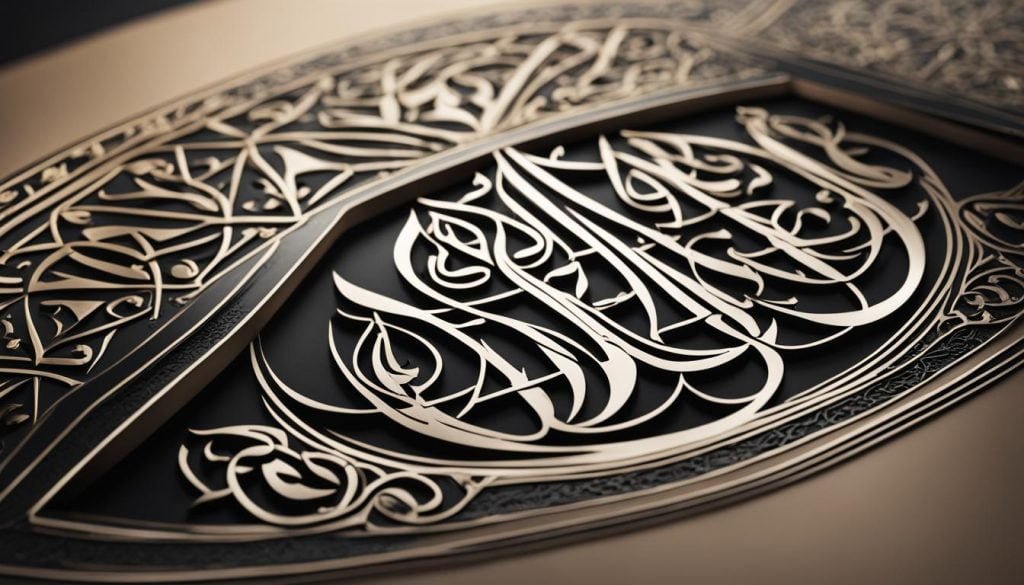
Arabic calligraphy holds a profound significance in the realm of Islamic art, serving as a powerful medium to convey the words of the Divine. Considered the highest form of art in the Islamic world, Arabic calligraphy adds a spiritual dimension to the act of reading and reciting the Quran. Its exquisite beauty and elegant strokes enhance the overall experience of connecting with the sacred text.
Islamic art is deeply rooted in the belief that visual representations of religious texts should be awe-inspiring and reflective of the divine presence. Arabic calligraphy perfectly aligns with this philosophy, as it harmoniously combines aesthetic beauty with sacred writings. By meticulously crafting each stroke, calligraphers convey not only the literal meaning of the words but also the spiritual essence behind them.
Furthermore, Arabic calligraphy plays a vital role in Islamic architecture, complementing and enhancing the design of mosques, madrasas, and other sacred structures. From intricate inscriptions on domes and minarets to ornate Quranic verses adorning the walls, calligraphy is seamlessly integrated into the architectural elements, creating a visually captivating and spiritually uplifting space.
Table: Importance of Arabic Calligraphy in Islamic Art
| Aspects | Significance |
|---|---|
| Conveying the Divine Words | Arabic calligraphy serves as a medium to convey the sacred text of the Quran, adding a spiritual dimension to the act of reading and reciting. |
| Spiritual and Aesthetic Harmony | By combining aesthetic beauty with sacred writings, Arabic calligraphy creates a harmonious balance that reflects the spiritual essence behind the words. |
| Enhancing Islamic Architecture | Calligraphy seamlessly integrates into the design of mosques and other sacred structures, adding visual appeal and uplifting the space. |
Arabic calligraphy is not only a form of artistic expression but also a means to connect with the divine. Its intricate patterns and harmonious lines exemplify the beauty of Islamic art while deepening the spiritual experience. Through its presence in the Quran, architecture, and various artistic forms, Arabic calligraphy continues to inspire and captivate people around the world.
Different Scripts in Arabic Calligraphy
Arabic calligraphy is renowned for its diverse range of scripts, each with its own unique characteristics and historical significance. Let’s take a closer look at some of the prominent scripts used in Arabic calligraphy:
Naskh Script
The Naskh script is one of the most widely used and recognized scripts in Arabic calligraphy. It is known for its clear and legible letters, making it suitable for various applications, including manuscripts, books, and official documents.
Diwani Script
The Diwani script is characterized by its flowing and intricate design. Originally developed to serve the Ottoman Empire’s bureaucratic needs, it is often used for decorative purposes, such as in certificates, invitations, and royal decrees.
Thuluth Script
The Thuluth script is renowned for its elegant and elongated letters. It is commonly used in architectural inscriptions, mosque decorations, and religious manuscripts. Its graceful curves and balanced composition make it visually appealing.
Kufic Script
The Kufic script is one of the earliest forms of Arabic calligraphy. It is recognized for its angular and bold letters, often seen in architectural designs, coins, and historical manuscripts. Kufic script is known for its simplicity and geometric precision.
Ruq’ah Script
The Ruq’ah script is characterized by its compact and upright letters. It is widely used in everyday writing and informal correspondence. Its simplicity and ease of writing make it a practical script for various purposes.
Nasta’liq Script
The Nasta’liq script is a cursive style of Arabic calligraphy that originated in Persia. It is known for its fluid and curved letters, making it suitable for poetic compositions, elegant manuscripts, and calligraphic artworks.
Each script in Arabic calligraphy brings its own charm and artistic expression to the written word. From the clarity of Naskh to the intricacy of Diwani and the grace of Thuluth, Arabic calligraphy scripts continue to enchant and inspire artists and enthusiasts around the world.
Tools and Materials for Arabic Calligraphy
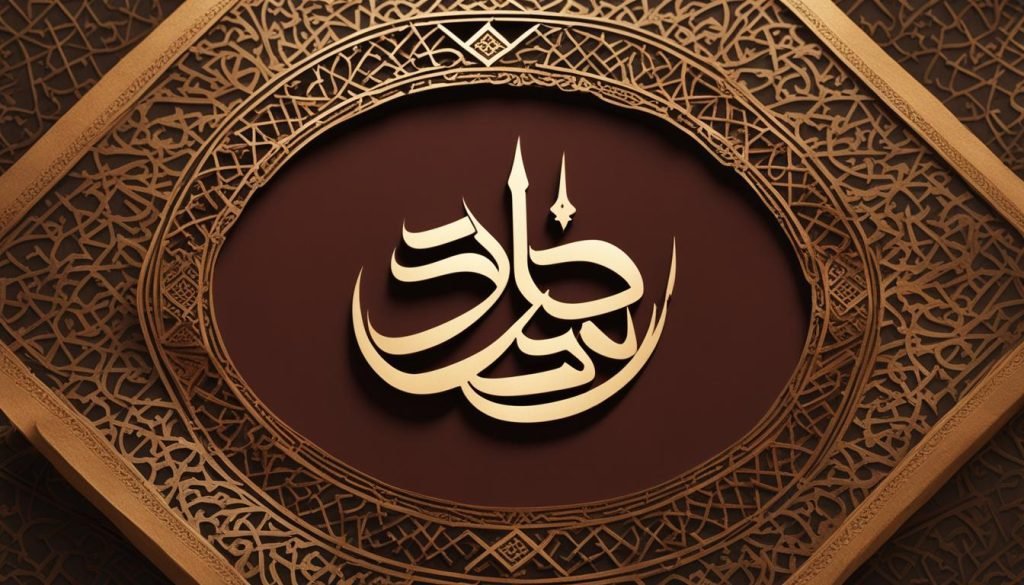
Arabic calligraphy is a delicate art form that requires specific tools and materials to create stunning results. Whether you are a seasoned calligrapher or just starting out, having the right equipment is essential. Here are some of the key tools and materials used in Arabic calligraphy:
Qalam (Reed Pen)
The qalam, or reed pen, is the main tool used in Arabic calligraphy. It is made from a dried reed that is cut and shaped into a pointed tip. The flexibility of the qalam allows calligraphers to create beautiful and precise strokes. The thickness of the lines depends on the angle and pressure applied while writing.
Arabic Calligraphy Ink
High-quality ink is crucial for achieving the desired effect in Arabic calligraphy. Traditional Arabic calligraphy ink is typically made using soot, water, and gum arabic. This combination creates a rich black ink that flows smoothly from the pen, resulting in bold and defined lines.
Handmade Arabic Paper
Handmade Arabic paper, also known as khatt paper, is a popular choice among calligraphers. It has a smooth surface that allows the ink to be absorbed without bleeding or feathering. Handmade paper adds a traditional touch to Arabic calligraphy and enhances the overall aesthetic of the artwork.
Bamboo Pens for Arabic Calligraphy
Bamboo pens are another option for Arabic calligraphy. They offer a different writing experience compared to reed pens, with a stiffer and more controlled feel. Bamboo pens are particularly favored for their durability and versatility, making them suitable for various calligraphy styles and techniques.
Arabic Calligraphy Brushes
In addition to pens, Arabic calligraphy brushes are commonly used for certain styles, especially in Chinese Arabic calligraphy. These brushes have flexible bristles that allow for a range of brush strokes and textures. They are particularly useful for creating intricate details and flourishes in Arabic calligraphy artwork.
Arabic Calligraphy Stencils
Stencils can be helpful tools for beginners or artists looking for consistent letter forms. Arabic calligraphy stencils are pre-cut templates that guide the placement of letters and ensure uniformity in size and shape. They are available in various styles and sizes, catering to different script preferences.
Gold Leaf for Arabic Calligraphy
Gold leaf is often used to embellish Arabic calligraphy artwork, adding a touch of luxury and elegance. It is carefully applied to specific parts of the design using adhesive and a soft brush. Gold leaf adds a stunning visual element, catching the light and enhancing the overall aesthetic appeal of the calligraphy.
Inkstones for Arabic Calligraphy
Inkstones play a vital role in Arabic calligraphy, as they are used to grind and prepare the ink. They are typically made from stone and have a flat surface where ink is mixed with water. The inkstone allows the calligrapher to control the consistency and intensity of the ink, resulting in precise and consistent strokes.
Metallic Inks for Arabic Calligraphy
Metallic inks offer a unique and eye-catching effect in Arabic calligraphy. These inks contain fine metallic particles that create a shimmering finish when applied to the paper. Metallic inks come in various colors, allowing calligraphers to experiment with different visual effects and add a modern touch to their artwork.
Having the right tools and materials is essential for creating beautiful Arabic calligraphy artwork. Whether you prefer traditional techniques or want to explore contemporary styles, investing in high-quality tools will enhance your calligraphy experience and help you achieve impressive results.
Learning Arabic Calligraphy: Training Courses and Tutorials
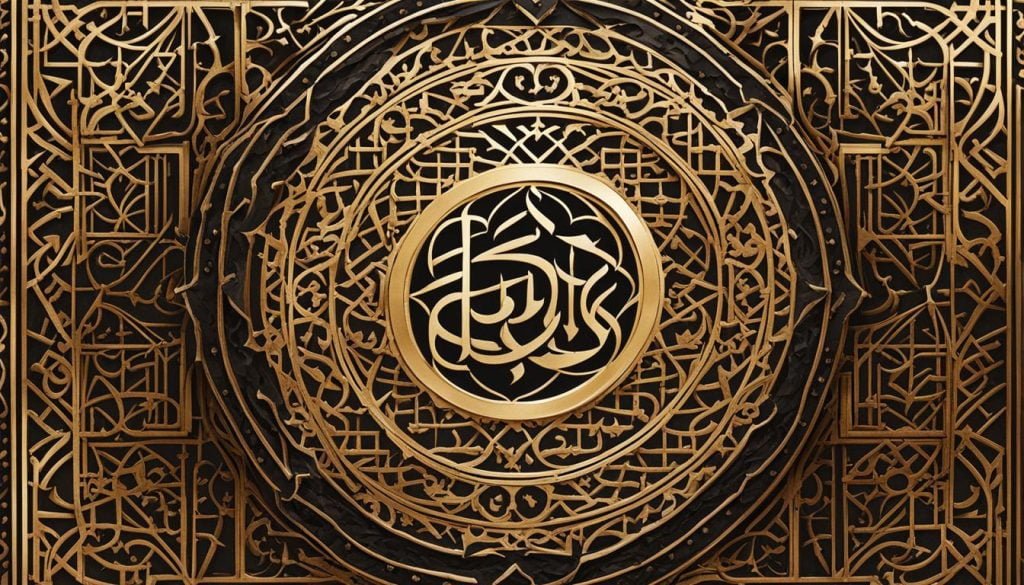
Embarking on a journey to learn Arabic calligraphy can be an enriching experience, whether you’re a beginner or an experienced artist. There are various resources available that can help you develop your skills and deepen your understanding of this beautiful art form.
If you prefer self-paced learning, online Arabic calligraphy tutorials can be a great option. These tutorials provide step-by-step instructions, allowing you to practice different calligraphy forms at your own convenience. You can explore various styles and techniques, all while receiving valuable guidance from experienced calligraphers.
For those who prefer a more structured approach, there are calligraphy training courses available in Arabic. These courses offer comprehensive lessons that cover the essentials of Arabic calligraphy. You’ll learn about the different scripts, tools, and techniques, gaining a solid foundation to further refine your skills.
If you thrive in a hands-on learning environment, attending calligraphy workshops in Arabic can provide valuable insights and opportunities for growth. These workshops often feature expert calligraphers who share their knowledge and expertise through demonstrations and personalized guidance. You’ll have the chance to practice alongside fellow enthusiasts and receive immediate feedback to enhance your skills.
Table: Comparison of Learning Resources
| Resource | Features | Availability |
|---|---|---|
| Online Arabic Calligraphy Tutorials | Step-by-step instructions, self-paced learning | Available online |
| Calligraphy Training Courses in Arabic | Comprehensive lessons, structured approach | Available in-person or online |
| Calligraphy Workshops in Arabic | Hands-on learning, personalized guidance | Available in-person or online |
Whether you choose online tutorials, training courses, or workshops, these resources can help you develop your skills and cultivate a deeper appreciation for Arabic calligraphy. With practice and dedication, you’ll be able to create stunning calligraphic compositions and explore the intricate beauty of this ancient art form.
Arabic Calligraphy in Different Art Forms
Arabic calligraphy is not limited to traditional calligraphic works. It extends its influence to various art forms, showcasing its timeless beauty and cultural significance. Explore the diverse range of artistic applications of Arabic calligraphy:
Islamic Calligraphy Art
The seamless blending of Arabic calligraphy and Islamic art is evident in the mesmerizing beauty of Islamic calligraphy art. It combines intricate script designs with vibrant colors and geometric patterns, creating visually captivating artworks that reflect the spiritual essence of the Quran.
Arabic Script for Wall Art
The elegance of Arabic calligraphy finds its place on walls, adding a touch of sophistication to interior spaces. Whether it’s a single word or an entire verse, Arabic script for wall art creates a striking focal point, making a powerful visual statement in homes, galleries, and public spaces.
Arabic Calligraphy on Fabric
Arabic calligraphy is skillfully incorporated into fabric designs, creating unique and culturally rich textiles. From clothing to home decor items, Arabic calligraphy on fabric adds a touch of heritage and artistry to everyday items, making them truly special and meaningful.
Arabic Calligraphy in Architectural Design
Architects and designers often incorporate Arabic calligraphy into architectural elements, such as facades, arches, and ceilings. The intricate curves and geometric patterns of Arabic script bring a sense of cultural identity and artistic expression to buildings, enhancing their visual impact and cultural significance.
Arabic Calligraphy Murals
Arabic calligraphy murals transform public spaces into vibrant artistic expressions. These large-scale artworks showcase the beauty of Arabic script and its transformative power, making a bold statement while celebrating the rich cultural heritage of the region.
Hand-lettered Quranic Calligraphy
The art of hand-lettered Quranic calligraphy reverently brings the words of the Quran to life on paper or canvas. Each stroke is meticulously crafted, conveying not only the message but also the devotion and reverence of the calligrapher. These artworks serve as a visual representation of the divine words and are treasured by believers around the world.
Arabic Calligraphy on Ceramics
Arabic calligraphy finds its place in the world of ceramics, adorning plates, bowls, vases, and other ceramic objects with intricate script designs. This art form combines the delicate beauty of calligraphy with the craftsmanship of ceramics, resulting in unique pieces that showcase the fusion of art and functionality.
Arabic Calligraphy in Graphic Design
Graphic designers often incorporate Arabic calligraphy into their designs, blending traditional script with modern aesthetics. From logos to advertisements, Arabic calligraphy adds a touch of cultural authenticity and visual appeal, creating captivating designs that resonate with a diverse audience.
Arabic Calligraphy for Branding
The distinctive and elegant nature of Arabic calligraphy makes it a popular choice for branding purposes. Companies and organizations leverage the timeless beauty of Arabic script to create memorable and eye-catching brand identities that reflect their values and resonate with their target audience.
Arabic Calligraphy for Book Covers
Arabic calligraphy graces the covers of countless books, both ancient and contemporary. The intricate script designs add a touch of elegance and allure, enticing readers and reflecting the essence of the written work. Arabic calligraphy on book covers serves as a visual representation of the literary treasures they contain.
Arabic Calligraphy on Glass
Glass art is enhanced by the addition of Arabic calligraphy, creating stunning pieces that showcase the interplay of light and script. From stained glass windows to glass etchings, Arabic calligraphy on glass adds depth and symbolism, transforming ordinary glass into extraordinary works of art.
Arabic Calligraphy on Leather
The timeless beauty of Arabic calligraphy finds its way onto leather, creating exquisite pieces that combine the art of calligraphy with the craftsmanship of leatherwork. From journals to wallets, Arabic calligraphy on leather adds a touch of sophistication and cultural authenticity to everyday items.
Arabic calligraphy’s versatility allows it to seamlessly blend with various art forms, enriching them and captivating audiences with its beauty and spiritual significance. From traditional Islamic calligraphy art to contemporary graphic design, the artistry of Arabic calligraphy continues to inspire and leave a lasting impression on those who encounter it.
Arabic Calligraphy Exhibitions and Demonstrations
Arabic calligraphy exhibitions and demonstrations offer a captivating glimpse into the world of this ancient art form. These events provide a platform for talented calligraphers to showcase their skills and share their passion with a wider audience. With a focus on celebrating the beauty and intricacy of Arabic script, these exhibitions and demonstrations create a space for appreciation, education, and inspiration.
At these exhibitions, you can witness a diverse range of calligraphic art, from traditional masterpieces to contemporary interpretations. The stunning display of intricate letterforms and harmonious compositions will leave you mesmerized, showcasing the skill and creativity of the calligraphers. Through their work, you can gain a deeper understanding of the cultural significance and artistic expression found in Arabic calligraphy.
Calligraphy demonstrations in Arabic script provide a unique opportunity to witness the mastery of the craft firsthand. Skilled calligraphers demonstrate their techniques and share insights into the process of creating beautiful letterforms. You can observe the delicate strokes, the careful balance of proportions, and the meticulous attention to detail that goes into each piece of calligraphy. These demonstrations not only showcase the artistry but also serve as a source of inspiration for aspiring calligraphers.
| Event | Date | Location |
|---|---|---|
| Arabic Calligraphy Exhibition: Celebrating Tradition | October 15-20, 2022 | City Art Gallery |
| Master Calligraphers’ Demonstration | November 5, 2022 | Cultural Center |
| Arabic Calligraphy Symposium | December 10-12, 2022 | National Museum of Art |
“Arabic calligraphy is not just a visual art form; it is a reflection of our culture, history, and spirituality. Through exhibitions and demonstrations, we aim to preserve and promote this revered tradition while inspiring a new generation of calligraphers.” – Ahmed Ibrahim, Calligraphy Society President
Whether you are an art enthusiast, a student, or simply curious about the beauty of Arabic calligraphy, attending an exhibition or demonstration can be a transformative experience. It allows you to immerse yourself in the art form, gain a deeper appreciation for its complexities, and witness the dedication and skill of the calligraphers. So mark your calendar and prepare to be spellbound by the elegance and artistry of Arabic calligraphy.
Arabic Calligraphy in Design and Decor
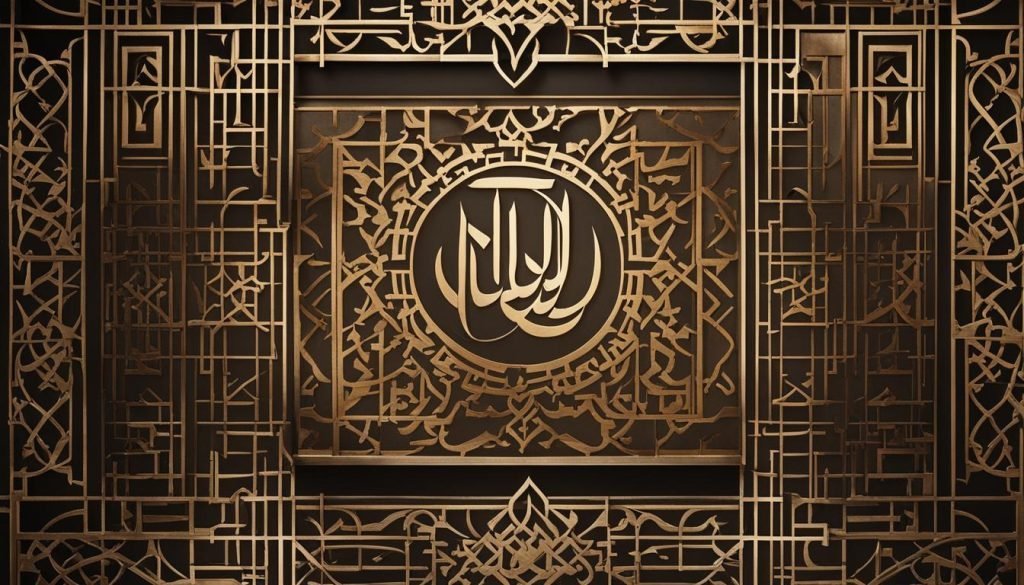
Arabic calligraphy is not only a form of artistic expression but also a powerful design element that can elevate the aesthetic appeal of various interior spaces. Incorporating Arabic calligraphy into interior design creates a sense of cultural richness and adds an element of uniqueness to any space. From residential homes to commercial establishments, the beauty of Arabic calligraphy can be seamlessly integrated into different design styles and applications.
When it comes to incorporating Arabic calligraphy in interior design, there are various options to consider. Calligraphy tools designed specifically for Arabic scripts, such as calligraphy pens and rulers, allow designers to create precise and authentic calligraphic elements. Arabic calligraphy watercolors offer a vibrant and expressive medium for incorporating calligraphy into wall art or decorative pieces. Additionally, Arabic calligraphy on ceramics, glass, fabric, and leather can add intricate details and texture to the overall design.
Arabic calligraphy in graphic design is another popular application, where calligraphic elements are often used in branding, book covers, and digital artwork. The elegance and beauty of Arabic script can create visually stunning compositions that leave a lasting impression on viewers.
Whether it’s a wedding invitation, an architectural feature, or a hand-painted mural, Arabic calligraphy brings a sense of sophistication and cultural heritage to any design project. By incorporating Arabic calligraphy into design and decor, you can create visually captivating and culturally rich spaces that resonate with both aesthetics and meaning.
| Design Application | Examples |
|---|---|
| Interior Design | Calligraphy-inspired wall art, decorative pieces |
| Graphic Design | Branding, book covers, digital artwork |
| Wedding Invitations | Custom calligraphic designs |
| Architectural Design | Calligraphy elements in building facades, interior features |
| Product Design | Calligraphy-inspired ceramic, glass, and leather products |
Enhancing Spaces with Arabic Calligraphy
Arabic calligraphy in interior design can be utilized in various ways to create a stunning visual impact. Here are some ideas:
- Create a focal point by incorporating a large-scale calligraphy artwork on a prominent wall.
- Use calligraphy-inspired patterns as wallpaper or textiles to add a touch of elegance to the space.
- Integrate calligraphic elements in lighting fixtures or architectural details to infuse cultural symbolism.
- Display calligraphy on glass surfaces, such as windows or room dividers, to create a sense of transparency and lightness.
- Commission a custom calligraphy piece for a personalized and unique design statement.
With its fluid lines and intricate details, Arabic calligraphy has the power to transform any space into a visually captivating and culturally significant environment. Whether you choose to incorporate it subtly or make it the focal point, Arabic calligraphy adds depth, meaning, and a sense of heritage to design and decor.
Arabic Calligraphy: A Historical Perspective
Embark on a journey through time and delve into the captivating history of Arabic calligraphy. From its origins in the 7th century to its role in preserving the Arabic script, this art form has witnessed significant milestones that continue to shape its legacy today.
One notable aspect of Arabic calligraphy’s historical significance is its incorporation in hand-lettered Quranic calligraphy and illuminated Arabic manuscripts. These treasured works of art not only showcase the artistic expression of calligraphers but also serve as a means of preserving the beauty and intricacies of the Arabic script. Through these meticulously crafted pieces, the sacred words of the Quran are brought to life, evoking a profound sense of spirituality and reverence.
“Arabic calligraphy is not merely an art form, but a gateway to connect with the divine. Each stroke carries a deeper meaning and serves as a visual representation of the spiritual essence encapsulated in the written word.”
For those seeking to explore the history and evolution of Arabic calligraphy further, there are numerous Arabic calligraphy history books available. These books provide insights into the development of different calligraphy styles, the techniques employed by master calligraphers, and the cultural and religious significance behind each script.
The Beauty of Illuminated Arabic Manuscripts
One of the most remarkable forms of Arabic calligraphy is seen in illuminated manuscripts. These captivating works of art feature intricate designs, vibrant colors, and meticulous craftsmanship. Illuminated manuscripts played a pivotal role in the preservation and dissemination of knowledge, with their striking calligraphy and decorative elements capturing the imagination of readers throughout history.
To truly appreciate the historical and artistic significance of Arabic calligraphy, one must delve into the world of illuminated Arabic manuscripts. These extraordinary works of art are a testament to the skill and dedication of calligraphers and illuminate the profound impact that this art form has had on cultural heritage.
The Evolution of Arabic Calligraphy
Throughout its history, Arabic calligraphy has undergone several transformations, reflecting the diverse influences and artistic developments of different periods. From the earliest Kufic script to the elegant Thuluth script and the flowing Nasta’liq script, each calligraphy style carries a story of its own, representing the artistic expression of its time.
Arabic calligraphy history books offer a glimpse into the evolution of these scripts, providing valuable insights into the aesthetic principles, calligraphic techniques, and cultural contexts that shaped their development. Through studying the historical progression of Arabic calligraphy, one can grasp the profound influence it has had on both the artistic and written traditions of the Arabic-speaking world.
| Books on Arabic Calligraphy History | Author | Publication Year |
|---|---|---|
| The Art of Arabic Calligraphy | Hassan Massoudy | 2017 |
| Islamic Calligraphy | Yasin Hamid Safadi | 1979 |
| Arabic Script & Calligraphy | Jean Lassus | 2001 |
As you explore the historical roots of Arabic calligraphy, immerse yourself in the rich legacy of this art form. Marvel at the intricate details of illuminated manuscripts, seek inspiration from the strokes of master calligraphers, and embrace the beauty and spirituality that Arabic calligraphy offers.
Arabic Calligraphy as a Contemporary Art Form
Arabic calligraphy has experienced a remarkable transformation in recent years, evolving into a contemporary art form that merges tradition with innovation. Artists are pushing boundaries and experimenting with advanced techniques to create stunning and expressive pieces. Whether you’re a beginner or a seasoned calligrapher, there are exciting opportunities to explore and contribute to this vibrant art movement.
If you’re new to Arabic calligraphy, fear not! There are resources available to help you embark on your creative journey. Online tutorials provide step-by-step guidance, allowing you to learn at your own pace. You can also join calligraphy workshops and courses to gain hands-on experience and interact with fellow enthusiasts. With dedication and practice, you’ll soon be able to create beautiful Arabic calligraphy pieces.
The influence of Arabic calligraphy extends beyond individual art pieces. It has found a place in public art, where large-scale calligraphic installations grace public spaces, adding cultural richness and aesthetic appeal. These mesmerizing artworks invite viewers to appreciate the beauty of the Arabic script and spark conversations about the intersection of tradition and modernity.
Table: Eco-Friendly Arabic Calligraphy Supplies
| Product | Description |
|---|---|
| Recycled Paper | Environmentally-friendly paper made from recycled materials. |
| Vegetable-Based Inks | Inks derived from natural, non-toxic sources. |
| Bamboo Pens | Pens made from sustainable bamboo, reducing reliance on plastic. |
| Water-Based Inks | Inks that are water-soluble and have lower environmental impact. |
| Biodegradable Paintbrushes | Paintbrushes made from biodegradable materials, reducing waste. |
“Arabic calligraphy is not just about preserving tradition; it’s about embracing new possibilities and pushing the boundaries of artistic expression.” – Calligraphy artist
In the realm of digital calligraphy, technology has opened up exciting avenues for Arabic calligraphers. With digital tools and software, artists can create intricate and dynamic designs, exploring unique styles and experimenting with various effects. Digital calligraphy offers greater flexibility and enables artists to reach wider audiences through online platforms and social media.
Arabic calligraphy has also found its place in branding and tattoo art. The timeless elegance of the Arabic script lends itself beautifully to logo designs, packaging, and brand identities. Similarly, individuals seeking meaningful and visually striking tattoos turn to Arabic calligraphy to express their personal values and beliefs.
As we celebrate the contemporary side of Arabic calligraphy, it’s important to honor and respect the roots of this ancient art form. Whether you’re a beginner or an experienced artist, embracing both tradition and innovation will allow you to create calligraphy that resonates with the past while speaking to the future.
Conclusion
Arabic calligraphy forms are a mesmerizing display of artistry and cultural heritage. From traditional scripts to contemporary interpretations, Arabic calligraphy continues to captivate and inspire. The intricate patterns and harmonious lines of Arabic calligraphy evoke a sense of awe and admiration.
Whether you practice Arabic calligraphy as a personal hobby, incorporate it into your design projects, or explore it as a professional pursuit, the world of Arabic calligraphy offers endless possibilities. Each stroke tells a story and carries a rich history of artistic expression.
Embrace the beauty of Arabic calligraphy and delve into the ancient knowledge and artistry it holds. Let the elegance and uniqueness of Arabic calligraphy forms inspire your creative journey. Whether you are a seasoned calligrapher or just beginning to explore this art form, Arabic calligraphy is a treasure waiting to be discovered.
FAQ
What is the cultural and religious significance of Arabic calligraphy in Islamic art?
Arabic calligraphy is considered the highest form of art in the Islamic world. It enhances the spiritual experience of reading and reciting the Quran.
What are the different scripts used in Arabic calligraphy?
Some prominent scripts in Arabic calligraphy include Naskh, Diwani, Thuluth, Kufic, Ruq’ah, and Nasta’liq.
What tools and materials are used in Arabic calligraphy?
Calligraphers use a variety of tools and materials, including the qalam (reed pen), Arabic calligraphy ink, handmade Arabic paper, bamboo pens, calligraphy brushes, stencils, gold leaf, inkstones, and metallic inks.
Are there resources available to learn Arabic calligraphy?
Yes, there are various resources such as calligraphy practice sheets, training courses, online tutorials, and workshops that can help individuals improve their Arabic calligraphy skills.
In what art forms can Arabic calligraphy be found?
Arabic calligraphy can be found in various art forms, including Islamic calligraphy art, wall art, fabric designs, architectural elements, murals, hand-lettered Quranic calligraphy, ceramics, graphic design, branding, book covers, glass art, and leatherwork.
Are there exhibitions and demonstrations that showcase Arabic calligraphy?
Yes, there are exhibitions and demonstrations that celebrate Arabic calligraphy, providing opportunities to appreciate the beauty and skill of calligraphers and learn about the techniques and history behind Arabic calligraphy.
How can Arabic calligraphy be incorporated in design and decor?
Arabic calligraphy can be incorporated in various design and decor applications, such as interior design, wedding invitations, ceramics, graphic design, glass art, leatherwork, fabric designs, architectural elements, and book covers.
What is the historical background of Arabic calligraphy?
Arabic calligraphy has a rich historical background, dating back to the 7th century. Hand-lettered Quranic calligraphy and illuminated Arabic manuscripts have played pivotal roles in preserving the Arabic script and its artistic expression.
How is Arabic calligraphy evolving as a contemporary art form?
Arabic calligraphy continues to evolve with artists exploring new techniques, styles, and applications. It can be seen in public art, eco-friendly supplies, custom commissions, digital calligraphy, branding, tattoo art, and more.


